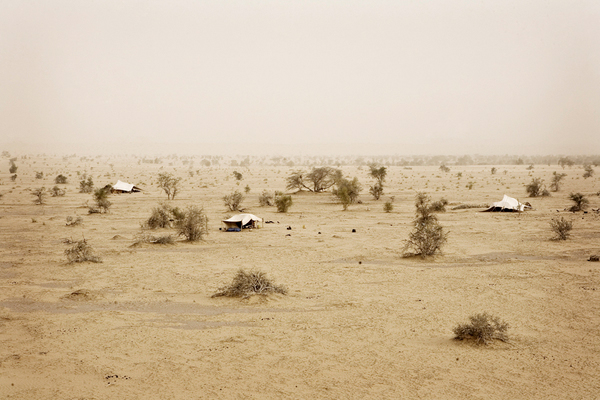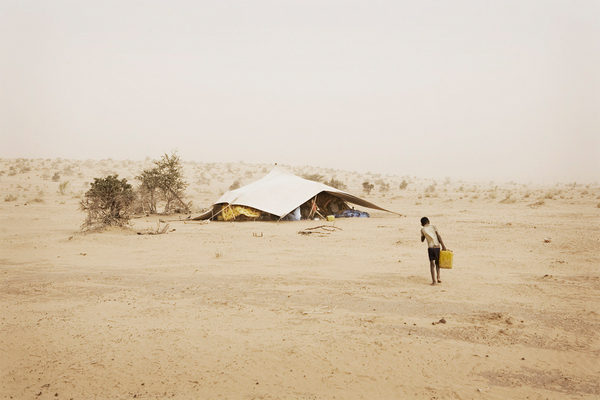NOMAD_SCAPES
Few countries have witnessed as extreme transformations over the last decades as the Islamic Republic of Mauritania. The project NOMAD_SCAPES documents the impact of climate change on human adaptation in its most concrete expression: massive desertification and the ensuing sedentarisation of an entirely nomadic nation.
In1969, 80 percent of the population in The Islamic Republic of Mauritania lived as nomadic pastoralists, relying predominantly on mobile livestock rearing strategies. Today 85 percent live in and around the major cities, two thirds of them in the dusty labyrinths of the so-called kébé, urban slum, impoverished, marginalised and with no title to land or access to basic sanitation.
In four decades, the capital city of Nouakchott, which was constructed ex-nihilo in 1957, exploded from 5,000 to 800,000 inhabitants, and urbanisation rate unparralled anywhere in the world. The reasons for this extraordinary transformation are manifold. To a great extent it can be attributed to twoparticularly severe droughts which swept through West Africa in 1968-1973 and1982-1985, largely decimating the livestock of vast numbers of nomadic pastoralists, thus causing a veritable exodus from the rural areas. Many families lost their animals and thus their means of subsistence, causing them to give up their nomadic livelihood and become sedentary in and around the few cities of considerable size. Subsequent droughts in the last two decades have only intensified the processes of sedentarisation and urbanisation.
Theproject NOMAD_SCAPES investigates the tremendous socio-cultural and political transformations in the IslamicRepublic of Mauritania, which are intricately linked to the precarious entanglement of severe and recurring droughts (disequilibrium environment), politico-ideological disjuncture and the interpenetrations of nomad and sedentary lifeworlds, by focusing on the nexus of these amalgamations : contemporary nomadism.
From an actor-oriented perspective I focus on mobile adaptation strategies and local spatio-temporal perceptions of the precarious environment in two distintsettings : the arid Hodh Ech Chargui province in South Eastern Mauritania and the urban slum of El Mina, on the outskirts of the capital city, Nouakchott. Within this framework, the notion of adaptation in disequilibrium environments is expanded beyond the prevalent discussion of human-nature relationship,climate change and ecology. By analysing nomad-sedentary interpenetrations,urbanisation and political developments since independence in 1960, the project NOMAD_SCAPES provides detailed documentation of a severely understudied context while revitalizing and expanding existing debates on climate change, social resilience, human adaptation and socio-cultural transformation.
www.christianvium.com










